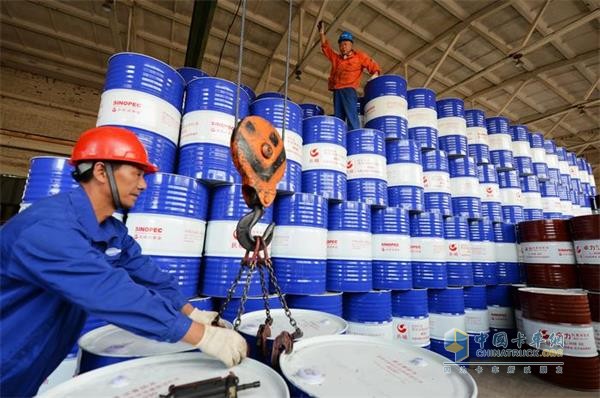As the economic downturn has caused consumers to look for lower-end and more cost-effective products, the local independent producers have thus won the development momentum and successfully increased their market share in the consumer, industrial and commercial sectors. Domestic large companies that once provided low-, medium-, and high-end lubricants will mainly provide high-end products by 2020. This makes the market's low-end lubricants mainly provided by local small businesses. Multinational companies have begun to sell more directly to major customers, and local giants do so. They provide direct customers with more direct sales and personalized services, while multinational companies are more adept at technology, such as lubricants management projects. However, the economic slowdown has not prevented the government from passing regulations to promote the evolution of products in the automotive and industrial sectors. The Chinese government has issued a policy requiring the replacement of existing obsolete equipment with higher speed and more durable modern equipment. The automotive industry is also evolving for product evolution. To cater to global trends, China's automotive lubricant marketers are committed to producing products that can help vehicles improve fuel economy and meet more stringent emission standards. In 2016, China’s auto sales exceeded 28 million, an increase of approximately 15% over the previous year, exceeding the US’s sales of over 10 million vehicles. A growing middle class, western urbanization and government stimulus policies have all helped to increase car ownership. Since 2003, the growth rate has reached double digits. The increase in urbanization clearly has a direct impact on the Chinese lubricants market. Traditionally, China's coastal areas represent a large part of the demand for lubricants, with a share of more than 50% in 2015. However, the central and inland regions have the largest GDP growth, which also increases the demand for lubricants in the region. Of course, coastal areas are expected to still account for a considerable proportion of lubricants. Although market demand is expected to shrink to 6.9 million tons by 2020, the Chinese market will remain one of the world's largest lubricants markets. It is estimated that China’s current market value is about 26 billion U.S. dollars. In terms of quantity, industrial lubricants dominate, with a market share of close to 50%. In terms of currency value, the dominant consumer goods sector accounts for about the same percentage. After the merger, the demand for lubricants in the commercial and consumer goods segment was approximately 3.9 million tons. Engine oil accounted for about 70% of the total demand, of which heavy duty diesel engine oil accounted for less than 50%, passenger car engine oil is about 25%. The portion of industrial oil, mainly processed oil, totaled 3.1 million tons. The consumer goods sector has seen the fastest growth. This trend will continue into 2020. Robot has been used widely in modern industry. With the deeply urge for automation in grinding field, robot has been a smart mehtod to realize grinding automation. Our Force Control System connects with robot, can work in grinding polishing sanding, high working efficiency, low cost and cleaning working environment. More and more manufacturers choose this method to realize automation reform. So this method has been used in metal,plastics,acrylic, wood, compound material processing in 3c, household sanitary ware, auto parts, transportation tools etc. sanding use robot,robot use in sanding,robotic sanding machine DARU Technology (Suzhou) Co., Ltd. , https://www.szforcecontrolsystem.com In 2017, the domestic lubricants market grew rapidly
In 2017, the domestic lubricants market grew rapidly
The slowdown in economic growth and government regulations are the drivers of the changes in the Chinese market. It is expected that China's gross domestic product will expand at an annual growth rate of approximately 4.5% in the next five years, which is significantly lower than the double-digit growth rate in 2003-2011. At present, the industrial and commercial sectors are enhancing the modernization of equipment and teams through a large number of integrated actions, which also drives them to seek better lubricants and services to reduce overall costs and ensure their profit margins.